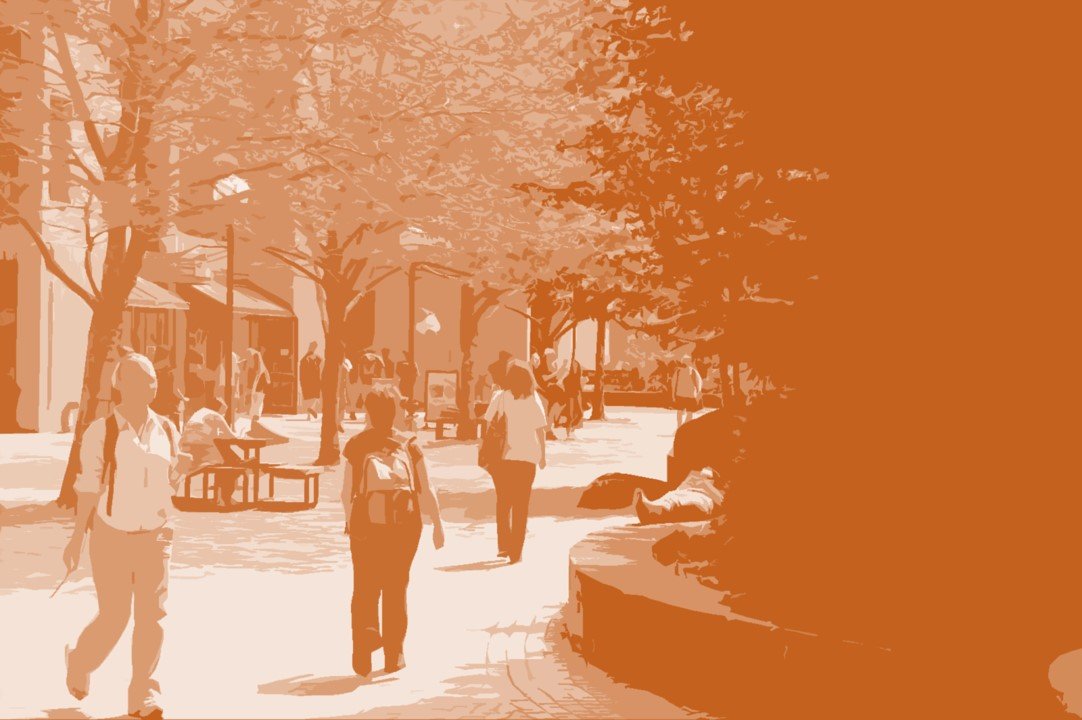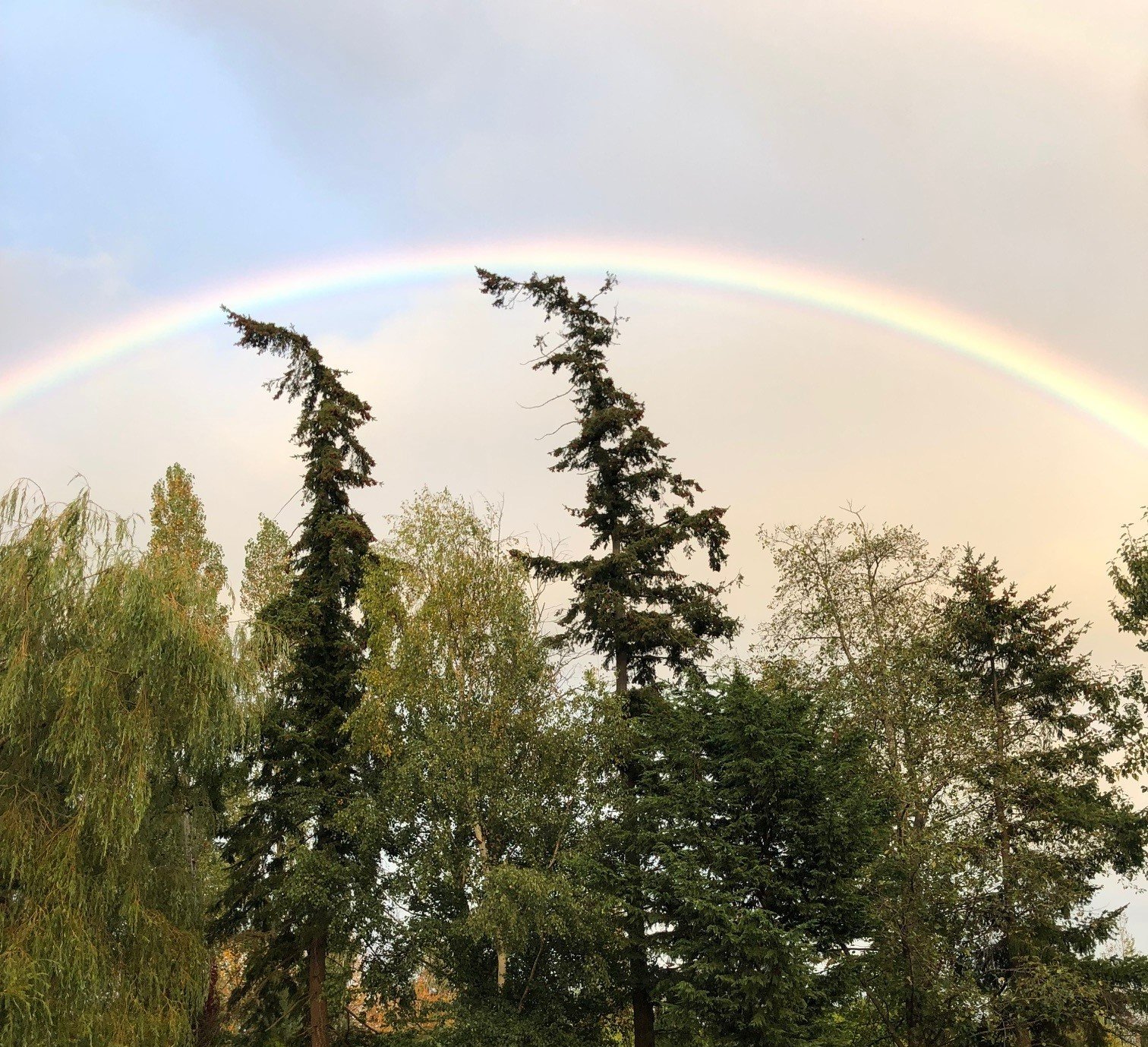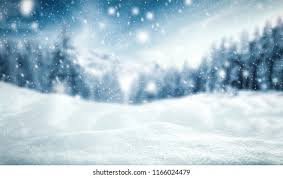Anthropology Newsletter
Follow Us
Notes from the Chair Judith Pine
I have lately been contemplating resilience and the importance of shared goals. In my personal life I needed to cope with damage to a ligament in my knee halfway through training for my first marathon. Thanks to a wonderful running buddy and an excellent physical therapist I did complete the marathon, but I did not run all of it and I was quite literally the last person to cross the finish line before they unplugged the clock and took the whole thing down. My friends and family at the finish line, and my friends on bikes who met me in the last leg and peddled slowly along keeping me company, were vital in keeping me going. The marathon, at least in my experience of it, was a communal achievement.
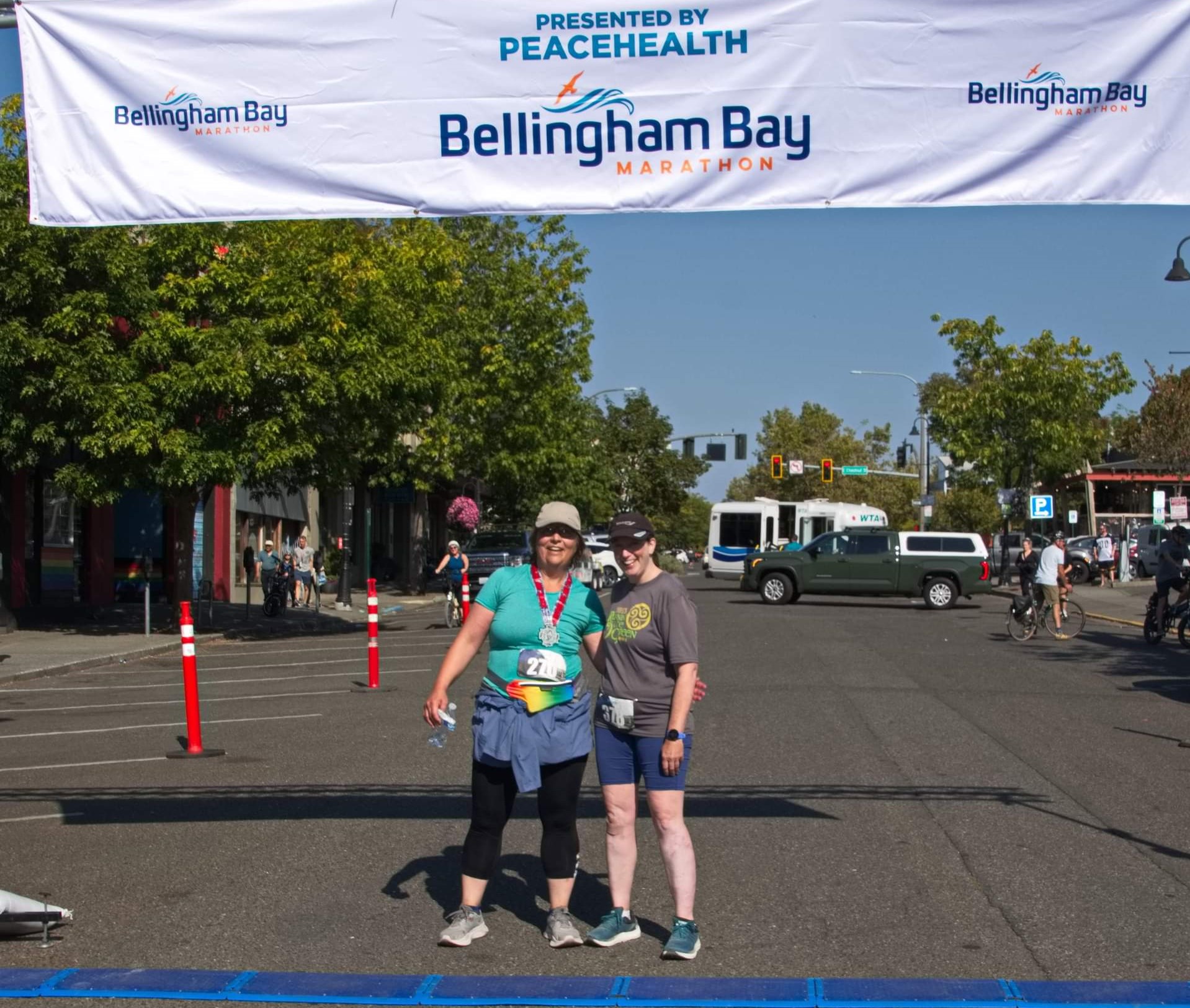
The WWU Anthropology Department likewise keeps on moving forward! Since I joined the department in Fall 2008, I have found a community dedicated to providing support for so very many wonderful individual achievements. I take on the role of Chair grateful for Prof. Koetje’s model of unflappable calm in the face of challenges. I join an amazing administrative team and am sure I will continue to lean heavily on Lauren Townshend and Maeghan Demmons. I treasure the work my faculty colleagues unfailingly provide in support of the department, and I look forward to working with faculty, staff, and students as we move steadily along a route we often create as we go.
I had the great good fortune to sit with a group of WWU Anth majors at the plenary address at the American Anthropological Association meetings in Seattle in November. Prof. Ana Celia Zentella gave a moving, passionate talk focused on the need for anthropologists to make a real difference in the world, addressing inequity not simply describing it. As the foremost practitioner of what she terms “anthropolitical linguistics” Prof. Zentella walks her talk. I was so pleased that the Anth Dept had been able to defray some of the costs allowing our undergraduates to attend the conference and to be inspired by this talk. The presentation by the Bruna Lab (described below), for which the department was also able to provide some support, was also inspirational. Prof. Young’s work on the history of the department and presentations by Prof. Baloy, Prof. Fisher, Prof. Yu, and myself gave WWU Anthropology a significant presence even at this very large conference.
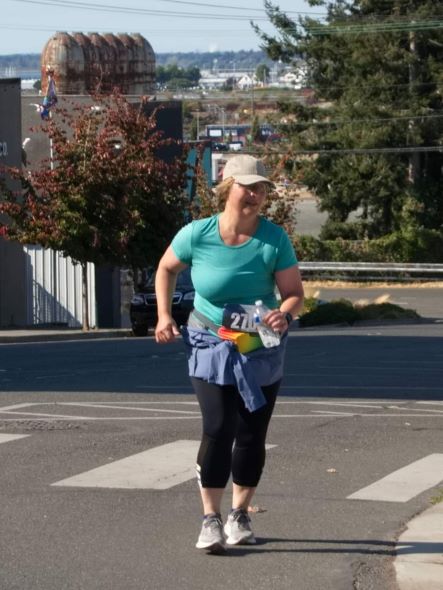
The WWU Anthropology Department is poised to enter a new phase of its history. It is exciting to see new faces in the hallway, to learn about the wide variety of research projects in which members of our community are engaged, and to teach in a community that continues to value pedagogy as central to our role as anthropologists. Two of our faculty, Prof. Fisher and Prof. Yu, are on sabbatical this year and I look forward to further inspiration in the 2023-24 academic year when they can tell us more about their work. We are developing a stronger social media presence with Prof. Monson as a model for integrating excellence teaching, research, and communication with the public. In the coming years I hope to build on the technological opportunities that this new era has opened up for us, continuing the livestream important events such as thesis defenses via Zoom and perhaps adding faculty and visiting scholar presentations to which we can invite the entire WWU Anth community.
I’d like to give a special shout out to the Anthropology Club as well, demonstrating its resilience by filling the Anthropology Multipurpose Room (formerly known as the Anth Lounge) with enthusiastic, engaged undergraduates who represent the future of Anthropology, a discipline I have loved since I met it when I was myself an undergraduate, recognizing its flaws and knowing we must continue the work. I am glad to be working in such excellent company.
We hope you will bookmark this page and follow us on social media.
Student Recognition
Congratulations to the 16 Western Washington University students in Prof. Michael Shepard's ANTH 201 Intro to Cultural Anthropology class, who won the Public Anthropology Award for storytelling in November 2022.
The competition involved over 1,000 students from sixteen North American Schools.

"I am currently completing my Master’s Degree in Gender Studies at Utrecht University in the Netherlands."
Eliza HortegasClass of 2021
Hello, my name is Eliza Hortegas!
Summer of 2021, I graduated with a Bachelors in Cultural Anthropology with a Minor in Women, Gender and Sexuality Studies at Western Washington University! I am currently completing my Master’s Degree in Gender Studies at Utrecht University in the Netherlands. The Gender Studies program is Nationally and Internationally renowned for providing practical and theoretical knowledge for students to have to ability to tackle social issues we face today. Focusing on power relations and the intersections between class, race, sexuality, etc., the program is preparing me for a future of activism and critical thinking. With a diverse group of people from various cultures, I have been able to widen my world lens and learn from my professors and my fellow classmates. The degree has made me think deeper, learn how to analyze theoretical frameworks, and ultimately learn where my place is as a researcher, student, and learner.
This winter I will be writing my thesis on the power relationship between technology and childbirth and hope to complete an internship this spring in the same field. One day, I hope to become a doula and to be involved in research projects to prevent dangerous perinatal experiences brought on by systematic inequalities and to overall help create a system safer for pregnancies, deliveries and all that comes in between. It has been an honor to be a part of the UU program, I couldn't have done it without the help and experiences from WWU. Best of luck to all the students this year!
Anthropology Student Scholarship
Anthropology Works Published in Cedar
Gifted Genes: An Investigation of College Student Perceptions of Direct-To-Consumer Genetic Kits, Kate Amos
The Evolution of 'Homo'-nity: An A to Z from Erectus to Sapiens, Hailee Desrosier
The Interdisciplinary Study of Genetically Modified Salmon and Their Effects on the Environment and Indigenous Communities, Victoria Fair and Kaydee Mittleider
Queering The Birth Experience: Documenting Queer Individuals' Labor & Delivery Experiences, Caitlin Laura Jessica Millard
The Influence of Intergenerational Trauma on Epigenetics and Obesity in Indigenous Populations: A Systematic Literature Review, Krista Schafte
Anthropology Works Published in Cedar
Re-Presenting People: Critically Reviewing Existing Imagery of Traditional Coast Salish Lifeways and Creating New Images, Beatrice Franke
Norwegian American Language Identity, Else Lindsey
Good dog. An osteometric and morphometric analysis of Coast Salish dog breeds from archaeological sites 45WH1, 45WH9, 45WH17, 45WH34, Courtney Jo Paton
Empowerment as a Birthright: Exploring the Power of Informed Choice, Delaney Elizabeth Reece
Embodied Feminism: An Ethnographic Study of Abortion Access and Hopeful Praxis, Nicolette Tuttle
Gestational Carrier Bloggers: Key Points of Uncertainty in the Social Exchange with Intended Parents, Samantha Whalen
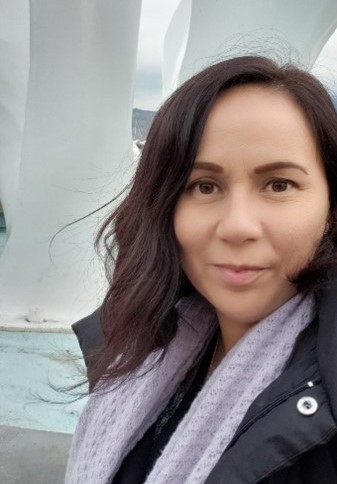
Visiting Professor
Dr. Cheryl Matthew joins Anthropology Faculty as this year's Visiting Professor.
Dr. Matthew teaches ANTH 201 Intro to Cultural Anthropology (Fall and Spring), ANTH 361 American Indian Perspectives (Fall and Winter), ANTH 353 Sex and Gender in Culture (Winter and Spring).
Recent Research and Publication
2022. Tesla Monson. Teeth, prenatal growth rates, and the evolution of human-like pregnancy in later Homo. Anthropology

Articles featuring Monson's research:
NewScientist: Our ancestors’ prenatal growth sped up after we split from chimps
Phys.org: Hominid prenatal growth rates found to have increased after lineage split from chimps
Riff Reporter. Evolution: Wie der Mensch zu seinem großen Gehirn kam und was die Schwangerschaft damit zu tun hat
Science Alert. There's a Weird Link Between Teeth And The Evolution of Pregnancy
Western Today. Our ancestors’ prenatal growth sped up after we split from chimps
2022. Peter Miterko & Sean Bruna. Reframing sense of community with photovoice: perspectives from residents of a permanent supportive housing program who have experienced chronic homelessness, Journal of Community Practice
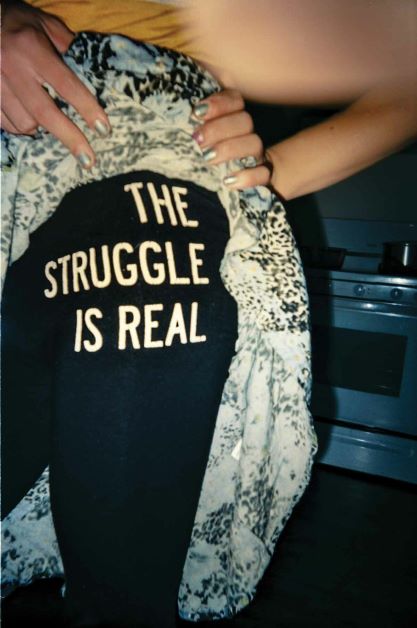
2022. Jerald Ek. The inflection points in formative Maya history: the view from the Champotón, Campeche, Mexico. Ancient Mesoamerica
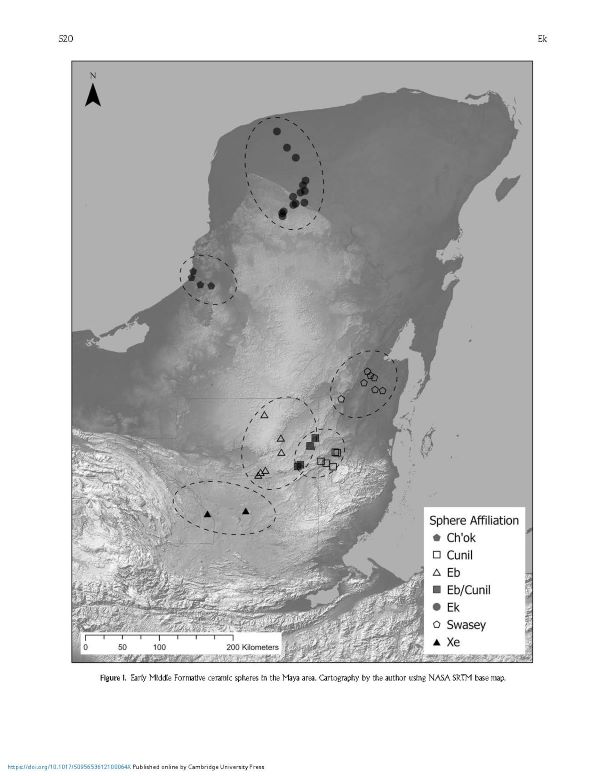
2022. Sobocinski, KL, CD Harvell, NJK Baloy, G Broadhurst, MN Dethier, A Flower, and J Delaney. Urban Seas as Hotspots of Stress in the Anthropocene Ocean: The Salish Sea Example. Elementa: Science of the Anthropocene 10(1).
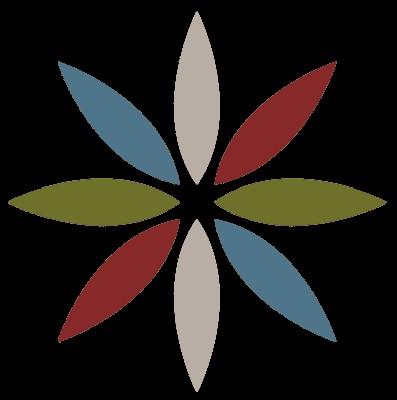
Elementa: Science of the Anthropocene
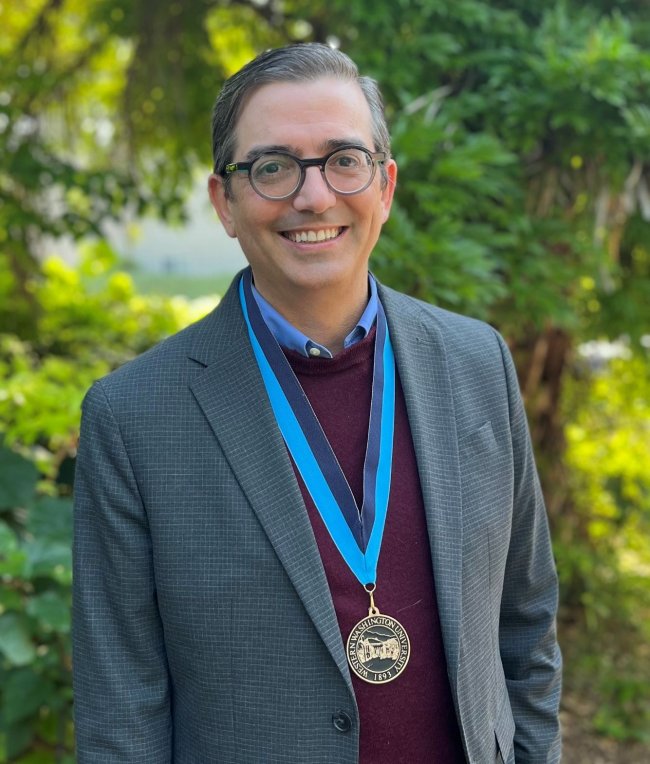
Equity & Inclusion Achievement Award
Recipient of WWU's 2022 Equity & Inclusion Achievement Award, Sean Bruna, PhD
The Equity and Inclusion Achievement Award recognizes a student, staff, faculty member or office for outstanding contributions to advancing inclusive student, faculty or staff success, enhancing academic excellence, and/or increasing Western’s impact in Washington within the context of equity and inclusion. . . After joining Western in 2014, Sean formed the Medical Anthropology Lab to mentor diverse students who are historically excluded from advanced research.
Full Description of the Equity & Inclusion Achievement Award and Recipient
New Faculty Member: Natalie Baloy, PhD
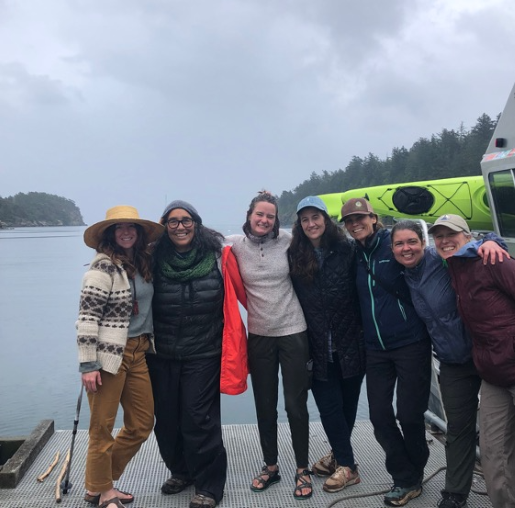
Natalie Baloy (far left) is a cultural anthropologist and new faculty member in the WWU Department of Anthropology. Natalie earned her PhD at the University of British Columbia, where she studied urban settler colonialism in Vancouver, BC. Prior to joining the department, Natalie completed a postdoc at the University of California, Santa Cruz, and worked as the Associate Director of Canada House Programs at WWU (the Border Policy Research Institute, the Center for Canadian-American Studies, and the Salish Sea Institute). Here she is pictured with the Salish Sea Studies (SALI) instructional team in Spring 2022 after a soggy trip to Sucia Island with SALI lab students from WWU and Whatcom Community College. Natalie is committed to critical place-based learning and supporting students to learn and live ethically where they live.

this year (photo credit: Natalie’s partner Chad).
Natalie, Chad, and Cleo enjoyed many adventures along the Pacific Coast this summer, including trips to the Olympic Peninsula, Tofino and Ucluelet, the Oregon Coast, Victoria, and Orcas Island. In between, they spent time cooking and spending time outside with friends, loved ones, and their eccentric pets Indie (a husky/shepherd mix who likes to sing) and Sandie (a cranky 21-year-old umbrella cockatoo).
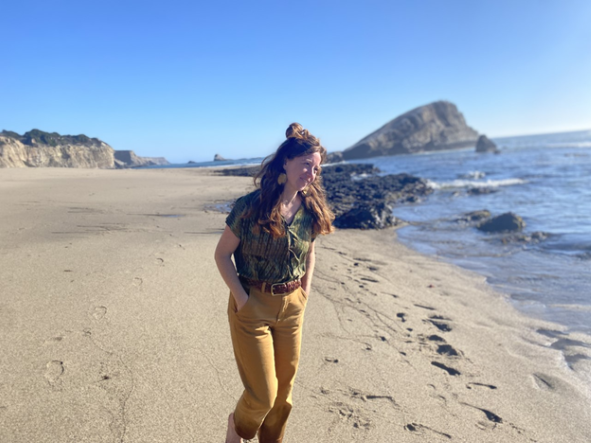
– at one of Natalie’s favorite places from her time
on the California Coast, Greyhound Rock.
Last week, Natalie traveled to Santa Cruz, California, to attend a conference called All In: Co-Creating Knowledge for Justice. The conference was organized by Natalie’s former colleagues at the University of California, Santa Cruz, where she worked as a postdoc prior to coming to WWU. The postdoc project focused on research ethics in collaborative and community-based research partnerships. Natalie is currently working on a book on this topic with her colleagues Dr. Sheeva Sabati (California State University, Sacramento) and Dr. Ronald Glass (UC Santa Cruz).

Natalie is teaching a senior seminar in anthropology this quarter called Anthropology and/of Settler Colonialism. The class meets in a classroom in Canada House, where students look out at the Salish Sea as they reflect on how colonialism has shaped this region. Through engaging with critiques of anthropological practice, students are discussing how the next generation of anthropologists will contribute to the study and transformation of settler colonial systems.
From the desk of. . .
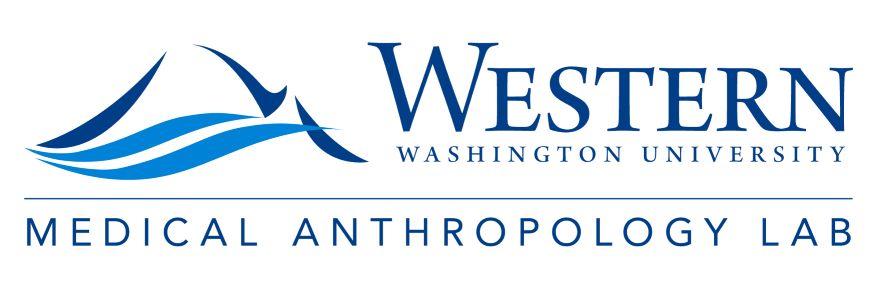
As 2022 draws to a close, I reflect on so many faculty, staff, and students that make the Anthropology Department such a wonderful home. It is notable that although I’ve been teaching and working remotely for nearly 3 years, I’ve connected with so many people as if I was still in Bellingham. While online tools have certainly made this easier to do, it is undoubtedly due to the incredible support from our department.
After spending a year as Graduate Director for our MA program, and with the encouragement and support of Dr. Sarah Campbell, I feel as though I am finally starting to find my sea legs. It has been such a pleasure working with the largest cohort of incoming students in our department's history. In my weekly meetings, conversations, and mentoring sessions, I am regularly reminded of the critical research and scholarship our graduate students conduct. It is a pleasure to work with them as they pursue their paths while envisioning future enhancements for our program. To all the faculty and staff that provide support, especially Lauren Townshend and Maeghan Demmons– I cannot say thank you enough! And to the students conducting important and meaningful research, thank you for the spark and insight you bring to the department and discipline!
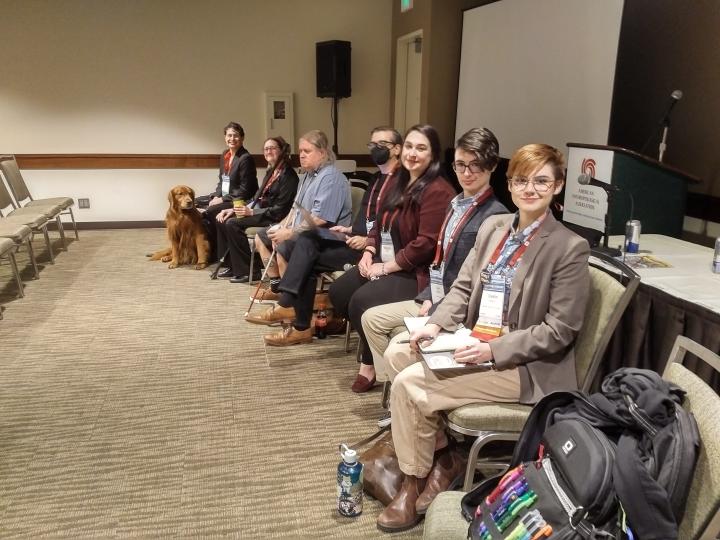
The last year has been really great for the Medical Anthropology Lab. Peter Miterko (MA, 2016) published another article from his master's research: “Reframing sense of community with photovoice: perspectives from residents of a permanent supportive housing program who have experienced chronic homelessness”. Peter also accepted a new position as a Community Health Coordinator for Skagit County. Way to go Peter!
Samantha Whalen (M.A. 2022) defended her thesis, “Gestational Carrier Bloggers: Key Points of Uncertainty in the Social Exchange with Intended Parents”. The research explored how gestational carrier bloggers negotiated social exchanges and their role within their relationship with intended parents. The suggested policy recommendations could support a more favorable exchange experience in future pairings.
Current graduate students L. C. “Spike” Osadchuk, Rhiannon Joker, and Jessica Paredes Strong are all busy with their research and data analysis, and we all look forward to their findings. L. C. “Spike” is focused on the analysis for the thesis research regarding supportive coping strategies in the disability community in times of social isolation. Rhiannon is in the final stages of IRB approval as she expands her research on Latinx idioms of distress to a national scope. Jessica is now beginning her research examining resilience among survivors of sexual assault. Collectively, these research projects highlight the diversity of medical anthropology as it is utilized to examine pressing social needs.
This year the lab also welcomed Patricia Fernández, a 1st year MA graduate student co-mentored by Dr. Yu and me. Patricia is preparing a literature review on her research topic for publication, and we look forward to sharing more about it later this academic year.
No less than five undergraduate mentees of the Medical Anthropology Lab also graduated (yes 5, wow!) Bassma Al-Nighashi (BA, Sociology, 2022) is graduating and is still assisting me and Drs. Fullerton (CofCharleston) and E. Bruna (U of Florida) on a manuscript. Jennie Adler (BA, Anthropology, 2022) is in the final steps of submitting a manuscript from her research with Dr. Yu and me on Recreational Drug Use Among College Students. Jennie’s research, a sub-project, examines perceptions of high-potency cannabis, or dabs, among college students. Caitlin Millard (BA, Honors & Anthropology, 2022) completed her honors thesis, Queering the Birth Experience: Examination of Obstetrical Practice. Kate Amos (BS, Honors & Biology, 2022) completed her thesis, Gifted Genes: An Investigation of College Student Perceptions of Direct-To-Consumer Genetic Kits. And last but not least, Krista Schafte (BS, Honors & Anthropology, 2022) completed her honors thesis, The Influence of Intergenerational Trauma on Epigenetics and Obesity in Indigenous Populations: A Systematic Literature Review and is submitting the manuscript for publication. Congratulations to all of the graduates!
This year the lab also presented at the annual meeting of the American Anthropology Association. Our session, “Labs as Unsettling Counterspaces for Mentored Research at Predominantly White Undergraduate Institutions (PWUI)”, discussed the role of the Medical Anthropology Lab within a broader educational context. The session, reviewed and approved by the Society for Medical Anthropology, was a remarkable success. The participants in our roundtable, all members of the Medical Anthropology Lab, included WWU faculty, students (now Alumni), and affiliate faculty from other institutions. Joining me on the panel were Rhiannon Joker (MA Candidate), “Spike” L. C. Osadchuk (MA Candidate), Dan Hargrave (BA, Anthropology 2018, Ph.D. Candidate at the U of Southern Florida), Caitlin Millard (BA, Honors & Anthropology, 2022), Tori Bianchi (BA, Anthropology 2018), G McGrew (Co-Director, Institute for Critical Disability Studies, Chemistry, WWU), and Cori Knight (PhD., UC Riverside). We especially want to thank the sponsors that helped send all eight of us to the conference: Medical Anthropology Lab, Department of Anthropology, United Faculty of Western Washington University - Professional Development Fund, Graduate Student Ross Travel Fund, Dean’s Fund of the College of Humanities and Social Science, the Institute for Critical Disability Studies (ICDS), the Center for Cross Cultural Research, Equity Inclusion & Achievement Award, Research Sponsored Programs Mini-Grant, and the unofficial Brunerton Fund for Student Enhancement. None of this could have been possible without assistance from Lauren Townshend, who provided endless assistance and coordination!
I’m also thrilled to be a part of the leadership that created and guided the Institute for Critical Disability Studies (ICDS), which was recently founded at Western. Shout out to the Institute’s new Co-Director G McGrew, and Center Research Assistant, L.C. “Spike” Osadchuk, both lab members. Way to create change!
The last year has been a whirlwind with many graduating students and collaborative projects. I’m so happy to be part of the incredible group of people that have made the Anthropology Department and our Medical Anthropology Lab home for the last eight years. Cheers to you all!
KZY_A Bit of Department History
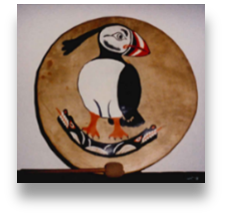
Photo by KZY
Western Washington University is on unceded land, land that belonged to Indigenous Coast Salish people and was taken before treaties were signed. Two Coast Salish women, E-Yow-Alth (Julia) S’yan-whom and her maternal aunt, Xwelas (Mary) Whe-ux Seya-hom lived in the area named after them, Sehome. Where they lived ended up in hands of the Bellingham Bay Improvement Company. In 1893, that company, the Fairhaven Land Company, and the heirs of Mary and John Lysle collectively donated land for the New Whatcom Normal School. In 1895, the State legislature provided funds to construct a building in the Sehome neighborhood and Old Main opened in 1899.
Young women attended the Normal School to become teachers, one of the few careers open to women.

My maternal aunt, Bess McGuire, is an example; she graduated from the Normal School in 1920, went on for an advanced degree, and became one of the first women principals in California. The campus was slower in welcoming Indigenous students. In 1956, Mary Ellen Hillaire became the first member of the Lummi Nation to earn a bachelor’s degree from Western. [1]

The aftermath of World War II resulted in significant growth and in 1951 the Normal School was renamed Western Washington College of Education. Edward Arntzen (1894-1971) headed the Social Sciences division and in 1951, hired Herbert “Bud” Cecil Taylor, Jr. (1924-1991). Taylor was the college’s first anthropologist and the person who may have had the greatest influence on the early history of the anthropology department. [2]
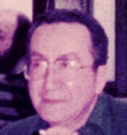
Angelo Anastasio (1915-2002), had been a lieutenant in the 100th (Japanese American) Battalion then a Captain in Intelligence during World War II before joining the combined departments of Sociology-Anthropology in 1960.
In 1961, Western Washington College of Education became Western Washington State College. Taylor became Dean for Research and Grants in 1965 (1965-1975) and Anastasio took over as chair of the combined departments. He hired the Sociology-Anthropology department’s administrator, Teresa LaFreniere. LaFreniere was followed by Linette Smith (1976-1979), Eileen Smith (1980-1994), Viva Barnes (1995-2020), and now Lauren Townshend and Maeghan Demmons.
Madeline Bronsdon was the first woman listed with the anthropology faculty. Colin Tweddell (1899-1998) was the department’s first linguist and the only person I knew who had fought in both World War I and World War II. He and Howard Harris joined the faculty in the mid-1960s. Two new faculty were hired in 1967, associate professor James W. Bosch (1919-1982) and Garland Grabert (1923-1987). Lucy Jayne Kamau and Edwin J. Allen, a physical anthropologist, joined the faculty in 1968-1969. [3]
Students protested in Red Square, still under construction, following the 1968 assassinations of Martin Luther King and Bobby Kennedy, and the escalating war in Vietnam. The 1969-70 academic year set a record for campus protests, fourteen. Professors Bosch, Harris, Allen, and Kamau, signed a petition in the Western Front, “End the Vietnam War Now!” The student newspaper, The Collegium, changed its name to The Western Front. [4]
The College of Humanities and Social Sciences became part of Western Washington State College in 1973. In 1976-1977, Western Washington State College became Western Washington University and the combined department, Sociology-Anthropology, split into individual departments and both departments moved into Arntzen Hall. The linguist Linda Kimball joined the anthropology faculty in 1977 followed by two additional faculty listed in the 1981-1983 catalog, Leslie Conton and Joan Stevenson. The department expanded to include a combined major in Anthropology/Biology. Leslie Conton left the department for Fairhaven College as Joyce Hammond entered the department.
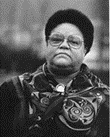
The department welcomed a one-year visiting scholar in 1988, Bettylou Valentine who spoke out at one of the campus forums on sexual harassment in higher education saying, "The system we are in is not a system that is good to women." [5]
The 1987-1989 catalog includes two additional cultural anthropologists, Daniel L. Boxberger, and Robert C. Marshall. The 1989-1991 catalog introduced anthropologist James Loucky and the archaeologist Sarah Campbell. The 1995-1996 catalog lists Kathleen Young among the faculty (for the first time after fourteen years as an adjunct). The 1997-1998 catalog introduces the archaeologist, Todd Koetje. Kathleen Saunders joined the department the following year.
A 1999 desecration of a Native American burial site near the city of Blaine, Washington, and the flagrant misdeeds of the out of state archaeology contractor resulted in a fifteen-year repatriation effort involving the Lummi Nation, anthropology faculty Alyson Rollins, Sarah Campbell, and archaeology students.
The 2001-2002 catalog introduced Michael Grimes who tragically died in 2009. The department continued to change as people retired, people died, and new faculty came on board. The linguist Judy Pine joined the department in 2008-2009 followed by M.J. Moser during the 2010-2011 academic year. The 2014-2015 added Sean Bruna to the faculty listing, followed by Josh Fisher and Yeon Yung Yu the next year.
Students initiated a forum calling for change in 2018 and the department committed to decolonizing the curriculum. The physical anthropologist Tesla Monson joined the faculty in 2019, only a year before the pandemic shift to online classes. We are now back to face-to-face classes and welcome our newest faculty, cultural anthropologist Natalie Baloy.
This year, we are fortunate to have an Indigenist visiting scholar, Cheryl Matthews. Over the years., the department has been blessed by exceptional part-time and adjunct faculty with Alison Rollins, Michael Shepard, Dominique Coulet Du Gard, and Jerry Ek continuing the legacy of outstanding teaching.
Since it opened in 1899, it is the students gracing this campus that moved the University forward. Wherever you are now, whatever you do, you are the best part of our history.
[1] Mary Ellen Hillaire went on to establish the Native American Studies program at Evergreen State College. Western Washington University Convocation Program, 2020, pg.9.
[2] Taylor photo credit, Kathy D. Sheehan, Window on Western, 2004, Volume 11, Issue 01, pg. 11.
[3] Bronsdon, a Canadian, became a curator at the Museum of Anthropology and a member of the faculty the University of British Columbia. Allen, with a master’s from Columbia, taught from 1969-1976. Archives West. Jayne Kamau (PhD 1971 University of Chicago) joined the faculty at Northeastern Illinois University.
[4] The Western Front, 1969, October 14, pg.6. Petition, wfhc_1969_1014, wwu:14145. Five hundred students blocked the freeway at the Lakeway Drive overpass protesting President Nixon’s decision to send troops into Cambodia.
[5] Photo credit, MOHAI, Seattle Post-Intelligencer Collection, 2000.107.218.33.02. Campus forum, Friday, November 18, 1988 The Western Front.
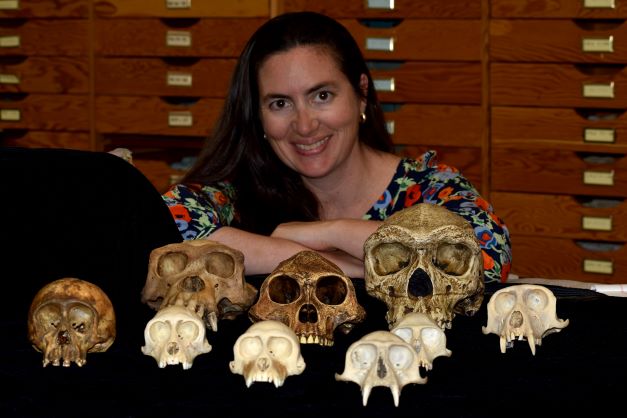
Well here we are again! Another year, flown by. Things are finally starting to feel a little more ‘normal’ as we return to face-to-face. It has been such a pleasure to see people in the hallways, engage in a little stop-and-chat, and be able to have students in the lab working with materials. But we certainly miss a few faces! Huge congratulations to more of our faculty who have retired, especially MJ Mosher, my counterpart here in Biological Anthropology. Although we could never replace her, it has been exciting to part of the hiring process for a new Biological Anthropologist. If all goes well, we will have a new faculty member in the Osteology lab next year!
I would also like to introduce two new MA students in the Primate Evolution Lab: Tristen Hansen and Jack McBride. Tristen was actually a BioAnth BS student here at Western – apparently he liked us so much, he decided not to leave! Jack joins us from the UW. We are lucky to have both of them in the Department, and I am excited to work with them on their projects: Tristen is working on the Salish dog collection in the Archaeology lab, and Jack is investigating the evolution of litter size (offspring number) in primates.
The Primate Evolution Lab has also had a great year for research. We were part of an interdisciplinary team at Western that brought in more than $500,000 from the National Science Foundation to buy a new micro-CT scanner for campus (collaboration with Geology and Environmental Sciences). I was also awarded a Pilot Grant from Western to visit the primate skeletal collections at the University of Oregon. I spent a week there over the summer, 3D scanning lots of monkeys and meeting with faculty and graduate students. More recently, I was awarded a small grant to visit the primate collections in Inuyama, Japan. I will be sure to post some photos on the Anthropology Instagram account!
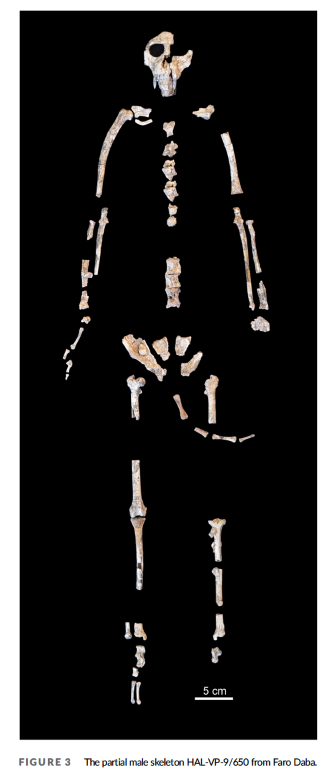
Several papers came out of our lab since the last newsletter. I led a major publication on the evolution of human pregnancy, published in the Proceedings of the National Academy of Sciences. It attracted a lot of media attention, both here in the US and abroad, and was a collaboration with researchers in Western’s Environmental Sciences Department, as well as at the Berkeley Geochronology Center and the National Center for Human Evolution in Spain (CENIEH). I also published four papers on monkey fossils, including three that describe 1,000 new fossils from Ethiopia. It was an incredible feat building from our work in Addis Ababa in 2017 and 2019, and it’s great to see them out and in circulation!
Classes have also been going well. It has been really rewarding to see students working with the new 3D scanner. It was a huge success in ANTH 420 Human Osteology, where students practiced using the scanner with materials in the lab. Tristen and Kelsey, two grad students in the Department, also used the scanner for a very interesting project on culturally modified trees. I can’t wait to see what other cool research comes from this impressive piece of technology (and our even more impressive students!).

I am also looking forward to my classes in Winter and Spring quarters - I am teaching two new courses for the first time. One is a class on human evolution in science-fiction literature, taught in the Honors College. And the other is a brand new course in Anthropology – ANTH 320 Skeletons and the Occult. In other exciting curriculum news, we have been working to revise the major requirements for the BioAnth BA/BS and the Biocultural BA – check back next year to learn more about our new and improved major tracks!
All in all, there has been a lot going on, and there is even more on the horizon. I am very excited to think about where the Department will be in 5-10 years. We are at a crucial point of defining and building our future as a Department and a discipline. And I am very grateful to be part of it. Thank you all for joining us on this adventure! Here’s to another year, WWU Anthro!
The last year has been a whirlwind. The transition from the pandemic is finally starting to feel real. With students and faculty back on campus, reforging social networks has been a uniquely daunting task. Having the opportunity to help each other, exchange ideas, and be a part of a community has made me realize how much we lost over the last few years. While reforming social bonds has been a challenge, our departmental community that has recrystallized over the last few months into something special.
of the x̌ʷiq̓ʷix̌ʷalqʷuʔ (Blue Water) Archaeological Project
In the past year I was honored to be involved in a new collaboration with the Stillaguamish Tribe of Indians. The x̌ʷiq̓ʷix̌ʷalqʷuʔ (Blue Water) Archaeological Project is a community-based participatory research program designed to reorient archaeological practice to address the concerns of indigenous communities and promote greater inclusiveness in perspectives, accessibility, and representation in our field. I serve as a co-director with three colleagues from the Stillaguamish Tribe Cultural Department. The formation of this project involved the reorientation of the WWU Archaeological Field School as an Indigenous-led program centered on local knowledge, tribal research priorities, capacity building, and promotion of unmitigated Indigenous sovereignty over intellectual property. The first season of this new partnership was an unmitigated success, and we will build on the foundation created this summer in 2023 and beyond.
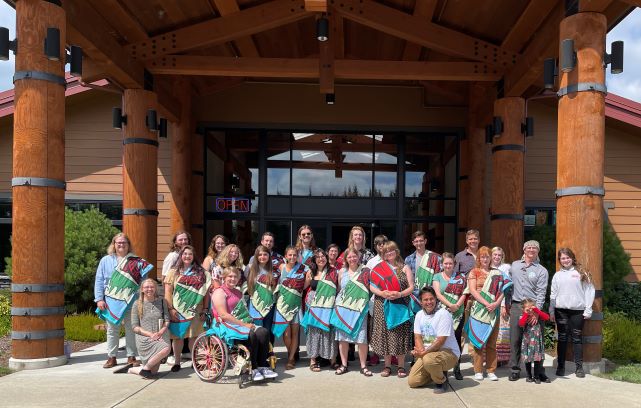
of the x̌ʷiq̓ʷix̌ʷalqʷuʔ (Blue Water) Archaeological Project
The goals of the x̌ʷiq̓ʷix̌ʷalqʷuʔ Project are ambitious: to realize the potential for community-based participatory research to transform institutions. The research goals of the project center on the interests of indigenous members of the project and the broader tribal community, including environmental stewardship, community organization, and relationships with the landscape from time immemorial. The project contributes to broadening access for underrepresented groups in roles ranging from project leadership, professional training programs, community outreach, and tribal youth programs, and is one of the only archaeological programs in the country that can accommodate participants with disabilities. For the 2023 season we are working to create accessible pathways for participation of an even broader group of students and participants.

Archaeological Project Logo
Anthropology has had a diversity problem rooted in the colonial origins of the discipline, and the goal of the x̌ʷiq̓ʷix̌ʷalqʷuʔ is to actively contribute to a new direction in the field. I cannot sufficiently express my gratitude to the Stillaguamish Tribe for their generosity in sharing their culture and history. Participating in the x̌ʷiq̓ʷix̌ʷalqʷuʔ Project has been the most rewarding experience in my career.
The beginnings of this new project overlap with the final phases of a long-term regional research project in the Maya Lowlands. The last field seasons of the Proyecto Arqueológico Champotón focus on chronological refinement to address lingering questions regarding the sequence and interrelationships between political, economic, social, and ecological dynamics documented by the project over three thousand years of human occupation in the Río Champotón watershed. Research conducted last summer focused on ground verification and mapping of undocumented cities identified from satellite imagery that are today located in extremely remote locations.
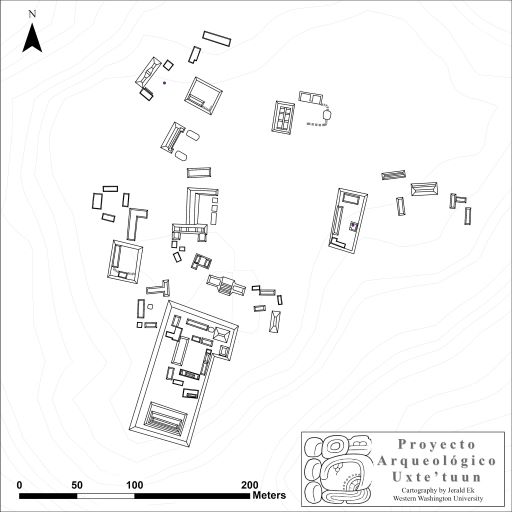
Campeche, Mexico. Proyecto Arqueológico Uxte’tuun.
The final phase of fieldwork for this project will include an academic element (focusing on refinement of archaeological chronologies to facilitate more precise correlations between archaeological, epigraphic, historic, and paleoenvironmental datasets) and a community-based component. The x̌ʷiq̓ʷix̌ʷalqʷuʔ Project has heavily influenced my approach to community interactions. This is embodied in new relationships and collaborations with a local museum that opened this winter and community-based participatory research with students and faculty from a primary and secondary school in the town of Champotón.
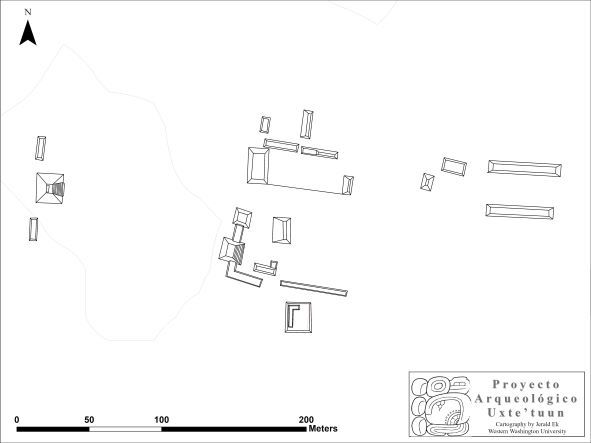
Campeche, Mexico. Proyecto Arqueológico Uxte’tuun.
As my research focus has shifted from Mesoamerica to the Salish Sea, I’ve taken on a more active role in the local professional community. The x̌ʷiq̓ʷix̌ʷalqʷuʔ Project includes outreach and collaboration with a wide range of institutions, including tribal governments, academic institutions, and government agencies and private companies active in cultural resource management. I recently accepted a position on the Board of Directors for the Association of Washington Archaeology. I’ve also been active as a board member in the AWA Mentorship Program and served as a mentor to help students and early-career professionals find success in the field. I’ve also taken over as director of the Northwest Region Chapter of the AWA, and we have plans for a series of social and professional events in the next year. This group has been particularly effective in creating relationships between students, academics, and professionals in all sectors of archaeology over the last decade, and I hope we can sustain and build upon this history of success in coming years.
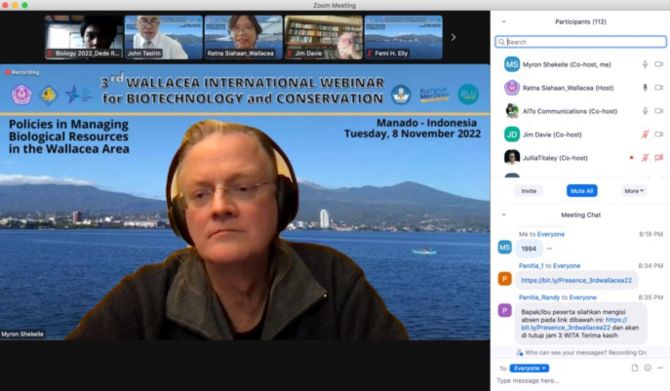
I look forward to teaching in Anthropology for the first time in nearly five years. I earned my PhD in Anthropology from Washington University in St. Louis, but I often teach in Biology, which is where I have been teaching since I last taught in Anthropology. Since then, I have published on another new species of tarsier, a student master’s thesis on tarsier genetics, a book chapter on tarsier behavior, another book chapter on tarsiers in mangrove (with Western anthropology students Blair Kaufer and Steven Stillwell, and our beloved Professor Joan Stevenson!), an overview of the conservation disaster facing Sulawesi, and have had more IUCN Red List threat assessments published than I can accurately remember without looking it up. At one point the Primate Specialist Group had assigned 26 assessments to me, which amounted to all of the tarsiers and all of the Sulawesi macaques. But several years elapsed between the Asian Primate Specialist Group Workshop in Singapore in 2015 and when the new assessments were finally published, and I don’t keep a mental tally of what all my name wound up on.
COVID was an exciting time for my research team, as I learned that I could direct a team of Indonesian scientists to survey the island of Sulawesi by using WhatsApp! The survey is complete and awaits analysis. I have an Indonesian PhD student working on some of those data. I plan to offer a field course to Indonesia this summer. Please reach out if you think you’d like to join us. I’ll be teaching Anth 350 Ecology of Human Variation and Anth 422 Nutritional Anthropology in Winter, and Anth 350 Ecology of Human Variation and Anth 426 Human Genetics & Epigenetics in Spring. See you soon!

